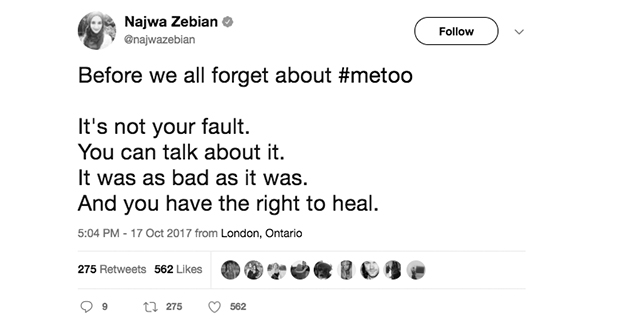Why do women have to turn their painful experiences into hashtags in order to make them more believable or valid?
In the wake of sexual assault allegations against Hollywood producer Harvey Weinstein, women have been sharing their experiences with sexual assault and sexual harassment using the hashtag #MeToo.
It is through the hashtag that women hope to bring past and present trauma to light as a means to educate and prevent sexual assault from happening to other women.
While #MeToo has become a unifying experience for survivors of sexual assault to share their stories, there is a problem underlying the circumstances from which it comes.
If the idea of #MeToo feels familiar, that’s because it is. In 2014 after misogynistic videos of the Isla Vista shooter surfaced, #YesAllWomen became a hashtag under which women shared their experiences with misogyny, sexism and sexual harassment.
The #MeToo movement was originally initiated by activist and woman of color Tanara Burke, in hopes to reach out to sexual assault victims in underprivileged communities. This movement took place before hashtags or Twitter were even born.
It wasn’t until this hashtag was appropriated by privileged white women in the entertainment industry that it gained traction and popularity amongst social media users.
Again — why must survivors of sexual harassment and assault bare their scars in order for them to be deemed legitimate or believable?
The message of #MeToo comes across loud and clear and is somber for both survivors of assault and consumers of social media. Without it, survivors of sexual assault who might never have come forward have the opportunity to share their experiences and make others feel less alone.
The way mainstream society treats women who come forward as victims of sexual assault speaks volumes about why hashtags like #MeToo come about.
Victims of sexual assault — male or female — might feel a great amount of shame that causes them to forego coming forward with experiences of assault, for fear that no one will believe them or that the person who sexually assaulted them is more powerful either in socioeconomic status or reputation.
The beauty of hashtags like #YesAllWomen or #MeToo is that they help survivors of sexual assault feel less alone.
But why does it take a hashtag or Facebook, Instagram or Twitter posts to validate the trauma of female experience?
Because rape culture dominates most conversations surrounding trauma from sexual assault or abuse, social media hashtags like #MeToo are essential to having comprehensive conversations in regards to the trauma surrounding sexual assault.
They shouldn’t have to be.
Because mainstream society is dominated by rape culture, people affected by sexual assault are afraid to come forward with experiences of abuse for fear that people will not believe them — or worse, that they are shamed for coming forward in the first place.
We must believe women who come forward as victims of sexual assault and abuse. If we discard their stories or challenge their believability, we become part of rape culture. We become part of the problem.
How many Harvey Weinsteins will there be between now and the day that America realizes that rape culture is real and that nearly every single woman has experienced trauma at the hands of a man?
Believe victims of sexual assault the first time. Do not wait until a hashtag is popularized to be ready to listen to their stories.




